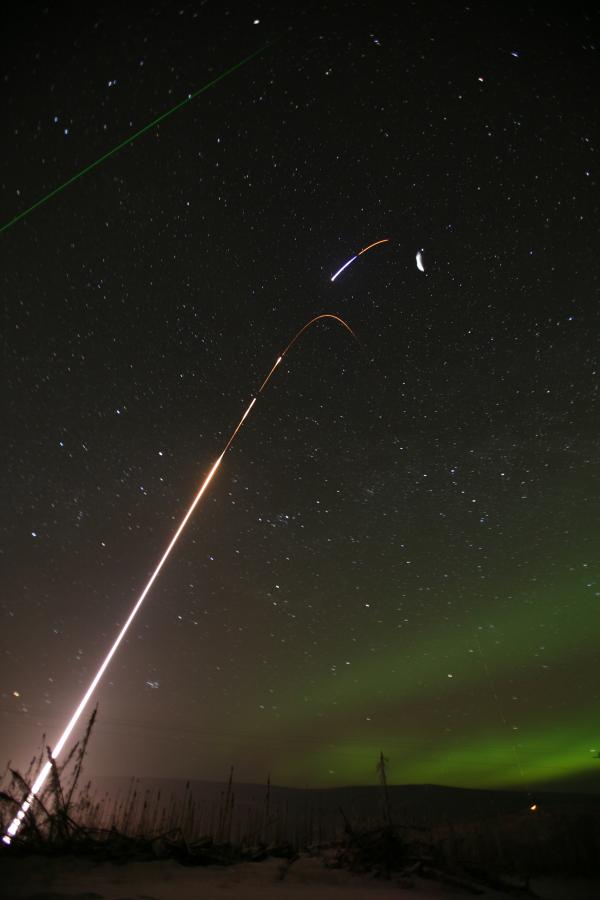Clemson University's space physicists have traveled the world to launch missiles to check atmospheric conditions.
Scientists recently launched a series of four missiles in Alaska's airspace to study turbulence in the upper atmosphere. These launches were conducted at the Poker Flat Study Area north of Fairbanks, part of NASA's missile campaign.
Professor of physics and astronomy Gerald Lehmacher is the operator of this experiment with the help of graduate student Shelton Simmons and Liyu Guo.
Lehmacher said: 'After six days of cloudy weather and snowfall, we had perfect conditions with the clear, moonless night sky above Alaska. We need the best observation conditions from the 3 cameras to capture the light traces of explosives in missiles created on the upper atmosphere '.
 The fourth rocket launch in the Poker Flat Study Area. (Photo: Craig J. Heinselman)
The fourth rocket launch in the Poker Flat Study Area. (Photo: Craig J. Heinselman)
The missile used is Terrier Orions 35 minutes , two journeys. They released trimethyl aluminum to create a light trail of vapor at an altitude of 87 miles . Ultra-sensitive cameras under the ground track those light trails. From there Lehmacher and his team were able to analyze the upper atmosphere's wind by monitoring the formation, dispersion and spread of light trails. 2 missiles have additional explosives with instrumentation to measure electron density, average temperature, and disturbances.
This study is a collaboration of Celmson with Penn State University and the Leibniz Institute of Atmospheric Physics in Germany. The University of Alaska assists in studying ground laser radar and other optical devices. The project is funded by NASA within 3 years.
In January, Clemson physicists went to Norway to conduct a joint experiment with Japanese scientists to study wind and atmospheric circulation. Measurements were made with equipment mounted on a Japanese S-310 rocket launched from the Andoya Missile Region in northern Norway, along with radar and camara ground.
The experiment was attended by the Japan Aviation Exploration Agency and Clemson's Department of Physics and Astronomy. Professor Miguel Larson is a researcher responsible for measuring wind on mounted missiles, with the help of three college students Lucas Hurd, Matt Jenkins, and Matt Henderson.
 Is the magnetic North Pole shift dangerous to humanity?
Is the magnetic North Pole shift dangerous to humanity? Washington legalizes the recycling of human bodies into fertilizer
Washington legalizes the recycling of human bodies into fertilizer Lightning stone - the mysterious guest
Lightning stone - the mysterious guest Stunned by the mysterious sunset, strange appearance
Stunned by the mysterious sunset, strange appearance